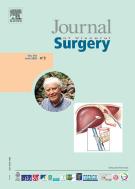Low-Phospholipid Associated Cholelithiasis (LPAC) syndrome: A synthetic review - 21/08/19
 , T. Brunel b, A. Rode b, B. Bancel c, K. Mohkam a, J.-Y. Mabrut a
, T. Brunel b, A. Rode b, B. Bancel c, K. Mohkam a, J.-Y. Mabrut a| páginas | 10 |
| Iconografías | 9 |
| Vídeos | 0 |
| Otros | 0 |
Summary |
Low-Phospholipid Associated Cholelithiasis (LPAC) is a genetic disease responsible for the development of intrahepatic lithiasis. It is associated with a mutation of the ABCB4 gene which codes for protein MDR3, a biliary carrier. As a nosological entity, it is defined by presence of two of the three following criteria: age less than 40 years at onset of biliary symptoms, recurrence of biliary symptoms after cholecystectomy, and intrahepatic hyperechogenic foci detected by ultrasound. While the majority of clinical forms are simple, there also exist complicated forms, involving extended intrahepatic lithiasis and its consequences: lithiasis migration, acute cholangitis, intrahepatic abscess. Chronic evolution can lead to secondary sclerosing cholangitis or secondary biliary cirrhosis. In unusual cases, degeneration into cholangiocarcinoma may occur. Treatment is built around ursodeoxycholic acid, which yields dissolution of biliary calculi. Complicated forms may call for interventional, radiological, endoscopic or surgical treatment. This synthetic review illustrates and summarizes the different aspects of this entity, from simple gallbladder lithiasis to cholangiocarcinoma, as well as secondary biliary cirrhosis requiring liver transplant, on the basis of clinical cases and the iconography of patients treated in our ward.
El texto completo de este artículo está disponible en PDF.Keywords : LPAC syndrome, MDR3, ABCB4, Intrahepatic lithiasis, Surgery, Cholangiocarcinoma, Liver transplant
Esquema
Vol 156 - N° 4
P. 319-328 - septembre 2019 Regresar al númeroBienvenido a EM-consulte, la referencia de los profesionales de la salud.
El acceso al texto completo de este artículo requiere una suscripción.
Bienvenido a EM-consulte, la referencia de los profesionales de la salud.
La compra de artículos no está disponible en este momento.
¿Ya suscrito a @@106933@@ revista ?

